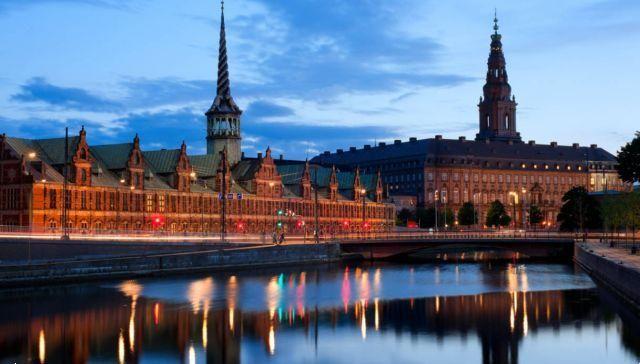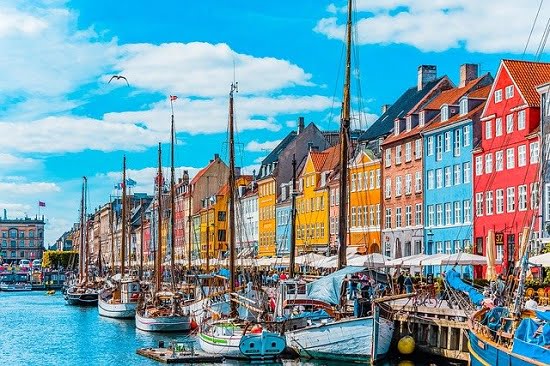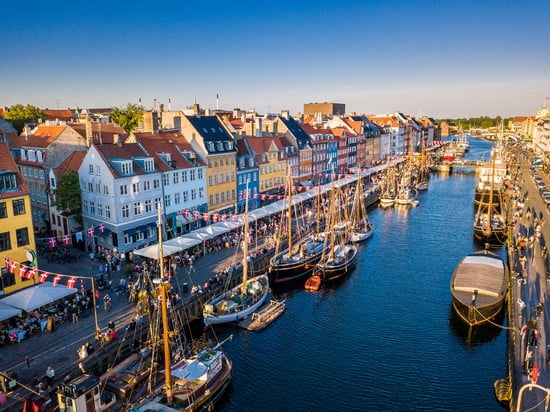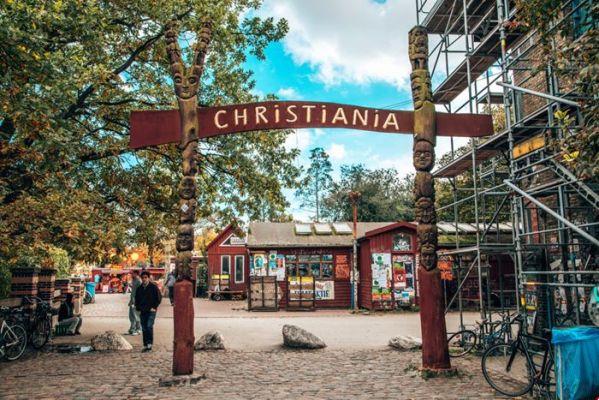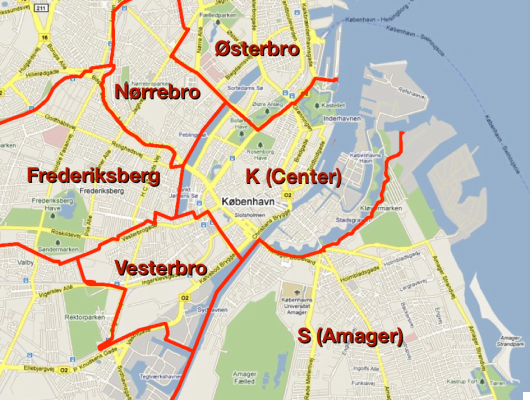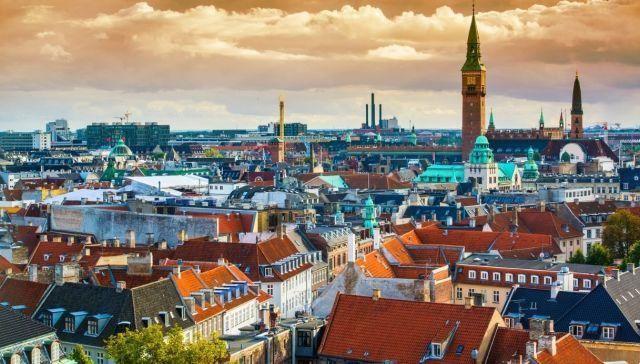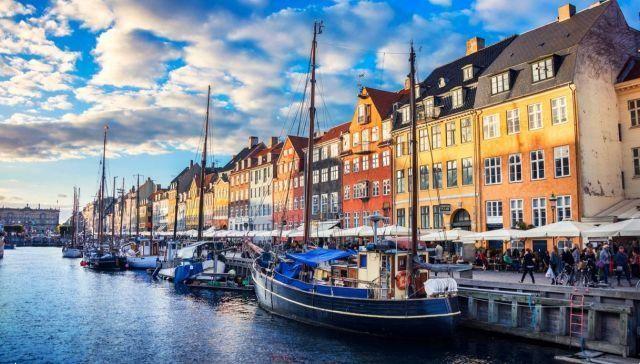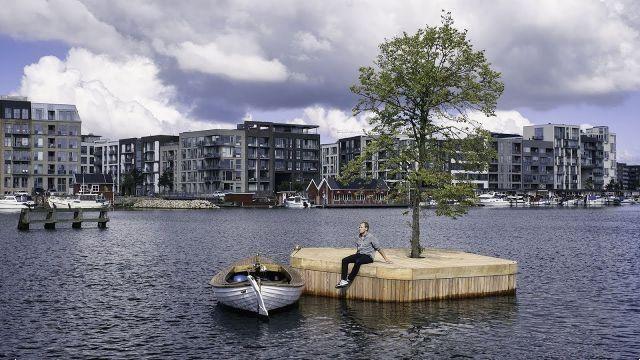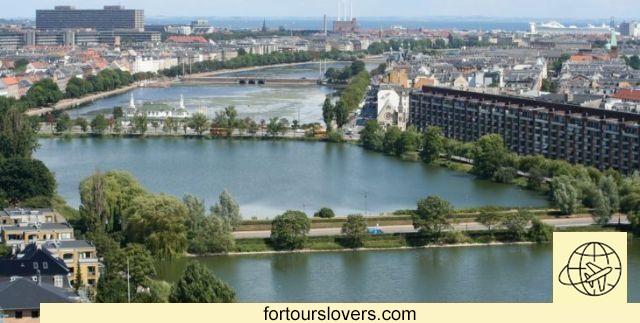
Copenhagen
12 things to do and see in Copenhagen and 3 not to doIn 2016 Denmark won the special Ranking of Happiness drawn up by Sustainable Development Solutions Network (SDSN), a United Nations (UN) body in charge of promoting and implementing good sustainable development practices. Two years earlier, however, Copenhagen won the "The European Green Capital Award" award established by the European Commission (EC) for the cities that invest most in environmental improvement. Two proofs of how high the quality of life is in Denmark, especially in the capital. However, respect for the environment - which means focusing on renewable energy, electric buses, cycle paths etc. - it's not Copenhagen's only flagship. As we have already seen for Stockholm, also in the Danish capital tradition e modernity they are not in contradiction with each other. This explains the happy coexistence between the oldest monarchy in Europe and l 'avant-garde architecture which, starting from the 90s of the last century, conquers more and more spaces in the city. In short, in Copenhagen nothing is really missing: history, culture, ecology, architecture and design. For a list of hotels recommended by Booking.com click here. In the rest of the article we will try to investigate these aspects. Happy reading.
1 Strøget
At the beginning we mentioned the "Double soul" of Copenhagen, to its identity suspended between modernity e tradition, consumerism ed elegance, technology e luxury. Strøget, the pedestrianized island that crosses the Danish capital, is the best summary of what has been said so far. In fact, the road connects the two main squares of the city: Rådhusplads e Kongens Nytorv. The first is the Town Hall Square, a symbol of the nation's democratic present; the second is the Royal Square built in the 600s by King Cristiano V. The streets (Frederiksberggade, Gammel Torv, Nygade, Vimmelskaftet, Amagertorv and Østergade) that join the two squares reflect the fertile contradiction mentioned above. At the beginning, bars, restaurants and shops more or less within everyone's reach; as you get closer to Kongens Nytorv, the elegance and refinement of the rooms increase considerably. Prada, Max Mara, Gucci, Luois Vitton and the other international fashion brands are all present to meet the needs of the elite clientele who live and frequent these streets (Østergade, the last stretch of Strøget, is by far the most chic area of the city).
2 Danish Jewish Museum
Il rescue of the Danish Jews is one of the most famous pages of the Second World War. Among other things, one of the few with a happy ending with the flight of over 7000 people to Sweden. A ray of light in the darkness of the Holocaust that was made possible thanks to the active collaboration of many Danes who worked to facilitate the escape of their compatriots through the strait of Öresund. Not surprisingly, the museum has an irregular shape that recalls that of the boats on which thousands of people sailed. The decision to build the wooden building is also a tribute to the ships used for the exodus. The Dansk Jødisk Museum was designed byarchitect Daniel Libeskind (also author of the Jewish Museum in Berlin) and is part of the oldest section of the Royal Library of Copenhagen. Inside, in addition to documents and materials concerning that October 1, 1943 (day of the escape), numerous other finds attesting to the history, culture and traditions of the Danish Jewish community starting from the seventeenth century. For learn more visit the place: jewmus.dk (English version available).
3 The Black Diamond
The black Diamond is the ultramodern part of the Royal Library of Copenhagen. The two buildings, the old one and this one, designed in the mid 90s by Schmidt, Hammer & Lassen studio, they are connected to each other by 3 external corridors overlooking the street. The peculiarity of the Black Diamond lies in the irregular shapes of the structure, in the choice of material and in the chromatic contrast between the outside and the inside. The last figure is also the most striking. The facade, in fact, was built with black granite from Zimbabwe, material that changes color depending on the time of day and the conditions of the sky and the waters of the port. The interior, on the other hand, takes light from the huge atrium in the center of the building that serves as an entrance and skylight. Briefly said of the architectural details, the cultural importance of the building should not be overlooked: Den Sorte Diamant houses over 5 million books, without forgetting the National Museum of Photography and Graphic Arts (Det Nationale Fotomuseum) which periodically exhibits its collections. In short, together with the Jewish Museum described above, the Black Diamond is another unmissable stop of a holiday in Copenhagen. For more information on the structure visit the Official site: www.kb.dk (English version available).
4 Tivoli Gardens
Il oldest amusement park in Europe second, in number of visitors, only to Disneyland Paris. THE Tivoli Gardens (or simply "Tivoli") were founded in 1843 by the journalist Georg Cartensen. Apparently to persuade Christian VIII on the goodness of the work, Cartensen suggested to the sovereign that entertaining the people would prevent them from becoming interested in politics. And, in fact, from that moment on, the park became an important reference point: first for the inhabitants of Copenhagen and, later also for tourists passing through the city. A place suitable for adults and children who in over a century of activity has been able to transform itself without giving up its original identity. And therefore trees, plants and flowers everywhere frame roller coaster, ferris wheel, funfair and other games typical of an amusement park. Obviously there is no shortage of bars and restaurants to refuel with a quick snack or have lunch / dinner in complete tranquility. For more information on the timetables, attractions and prices of the park visit the Official site: www.tivoligardens.com.
5 National Museum
Another recommended stop on a visit to Copenhagen is undoubtedly the Nationalmuseet, not far from Strøget. In this three-storey building from the XNUMXth century, the most important finds in Danish history for a vast time span ranging from prehistoric times to the present day. From the Vikings to contemporary Denmark, through the Middle Ages, the Renaissance and Modern History. In short, an all-out cross-section of Danish culture with one ethnographic section very well developed from which it is possible to reconstruct uses, customs and everyday life of nobility, bourgeoisie, crafts and rural world. In other words, the genius loci from Copenhagen lives here. For more information on timetables, prices and guided tours consult the Official site: natmus.dk (English version available).
6 The round tower
If you are a fan of photography and you want to immortalize the panorama of Copenhagen, Rundetårn, the round tower that once served as astronomical observatory (the oldest in Europe, commissioned by Christian IV in 1642), it's the right place for you. All you have to do is walk the 209-meter ramp (without steps, see photo) at the end of which there is the balcony (35 meters above street level) from which to observe the stars or, alternatively, the magnificent city sky line. Finally a curiosity. The balcony is surrounded by an iron gate in which theacronym “RFP". This is an engraving commissioned by King Christian IV and stands for "Regna firmat pietas" which, translated from Latin, means "piety strengthens kingdoms". For more information on the structure visit the place: www.rundetaarn.dk (English version available).
7 The Little Mermaid statue
The Little Mermaid is one of the most celebrated works of Hans Christian Andersen, the writer who in the nineteenth century together (more often in competition) with the philosopher Søren Kierkegaard animated the cultural scene of the small Scandinavian nation. According to the Danes "Den lille Havfrue" it is the most beautiful fairy tale ever written by Andersen who, however, to be honest, was the author of other great classics such as "The Princess on the Pea", "The Ugly Duckling" and "The Little Match Girl". Probably, the greatest success of "The Little Mermaid" is explained by the decision of the brewer Carl Jacobsen, owner of the historic Carlsberg, to dedicate a sculpture to the protagonist of the fairy tale. Sculpture that was later made by the artist Edvard Eriksen and which still today, more than a century later (the work was exhibited for the first time in 1913), is one of the main attractions of Copenhagen. The work is located near the pier of Langelinje on the city port and has had a troubled life at least as much as that of the protagonist of the fairy tale. In 1964 she was beheaded by a group of Danish artists exponents of thatSituationist International that in the 50s and 60s of the last century made a lot of talk about itself in France, Italy and Scandinavia. In 1998 the second beheading; in 2003 it was even made to disappear from the rock on which it still rests. Each time, however, the authorities have provided for the recovery and restoration of the work of art, demonstrating thehigh sentimental value that is recognized. To be seen.
8 Christiania
In the early 70s of the last century, a group of squatters occupied a disused barracks in the Christianshavn neighborhood and founded the "Free city" of Christiania. Free from municipal taxes and state taxes, but also from bourgeois impositions in terms of customs and lifestyles. A social experiment at the beginning badly tolerated by the Danish authorities but, in the end, they agreed to its continuation, subject to compliance with some precise provisions. The first, and most important of all, the ban on the consumption and sale of hard drugs. An objective achieved with difficulty in the early 80s which, in addition to guaranteeing the safety and dignity of the city, proved to be fundamental for the continuation of the experience. Over the years, bars, restaurants, shops, music clubs and a myriad of other businesses have arisen whose common figure is the hippie culture. But pay attention to how people behave in the neighborhood. In fact, the inhabitants of Christiania hate being treated as a kind of Indian reservation and therefore gods have been posted along the roads signs with the specification of what can and cannot be done. Among the things that are absolutely forbidden is photography (even with cell phones). Violating this rule can be a reason for misunderstanding with residents. Better to know. For the guided tours in Christiania visit the place: www.rundvisergruppen.dk (English version available).
9 Ørestad
In 1992 the Danish parliament with a specific law gave way to the design of Ørestad, a futuristic neighborhood 5 kilometers from the historic center of Copenhagen. The following year the Ørestad Development Corporation, a mixed company owned by the Municipality (55%) and the State (45%) with the aim of supervising all phases of design and construction of the new urban district which occupies an area of approx 310 hectares. First, a international competition won by a joint-venture of Finnish and Danish architects who divided the district into four distinct areas, each with its own specific vocation: Ørestad Nord, Amager Fælled kvarteret, Ørestad City and Ørestad Syd. At the beginning of the millennium, the first buildings were delivered and construction continued until 2015 in line with the initial roadmap which envisaged the development of the area in 20-30 years. The common feature of the 4 districts is the ultramodern design perfectly integrated into the city mobility network (airport, underground, bus, etc.). A satellite city that is already “present”, but which for tourists who visit it for the first time represents the reliable “future” of what will become the main European metropolises. Not surprisingly, in order to explain the complex evolution of the neighborhood, destined - for work, study and home - to absorb a large part of the population of Copenhagen, special guided tours. For more information visit the place: www.orestad.dk (English version available).
10 Opera House
Several times throughout the article, we have highlighted the bold Copenhagen design. A boldness due to both modernity of forms that the reinterpretation of structures that we would normally be led to think differently. The Black Diamond, for example: who, seeing it for the first time, would imagine being in the presence of a library? Likewise, few are those who seeing theCopenhagen Opera House they would be able to immediately guess the intended use. A structure 24 meters high, with a flat roof that protrudes over 30 meters on the glass facade where the entrance is located. A hyper-modern building, commissioned at the beginning of the millennium by Private Foundation "AP Møller and Chastine Mc-Kinney Møller" for the “monstre” figure of 500 million dollars. Before agreeing to its realization, the Danish parliament had a long discussion on the appropriateness of the work. Above all one concern: the proximity to the official residence of the Danish Royals, that Amalienborg Palace which it was feared could be obscured by the futuristic forms ofThe opera, the name by which the Danes call this building. Building that in the evening, with the reflection of the lights of the city, becomes even more beautiful than it normally already is. As for the possibility of admiring it from the inside, there are two alternatives: that, of course, is to buy a ticket for one of the scheduled shows; the other, to book a guided tour, which however lacks a precise timetable. For more information in this regard consult the Official site: kglteater.dk (English version available).
11 Zoo
A few years ago he did discuss the choice of those responsible for the Copenhagen zoo to kill a young giraffe complete with a public autopsy and a carcass given to the lions. A decision that raised a sea of criticism and even death threats to the management. The latter has always defended itself by explaining that the killing was based on scientific bases, since Marius (thus, in the meantime, the giraffe had been renamed by the environmentalists deployed in his defense) was born from two close relatives and endogamy to long would have led to a weakening of the species. Were there other solutions? Probably yes, it is not for us to say. What is certain, however, is that i criteria with which the area is managed are strictly Scientific and, beyond the episode just mentioned, they contemplate the animal welfare present. The numbers, moreover, speak for themselves: it is not possible to accommodate more than 3000 animals (hippos, monkeys, elephants, tigers, lions, polar bears, snakes, crocodiles, deer, goats etc.) without a constant effort to make their respective environments welcoming. Not only that, because the other point of honor of the Copenhagen Zoo is theaccessibility of spaces to children. There is also an area designed exclusively forinteraction for educational purposes with goats, rabbits, horses and other species suitable for the purpose. In short, a scientific approach, constant investments (in 2008 theElephant house; in 2013 theArctic Ring for polar bears) and pedagogy: these are the guidelines of the Copenhagen Zoo, unmissable stop for those visiting the city with children in tow. For more information visit the Official site: www.zoo.dk (English version available).
12 Blue Planet
Besides being thelargest aquarium in Europe (20.000 species of animals distributed in 53 tanks for a total of 7 million liters of water) the Blue Planet (in Danish, Den Blå Planet) also deserves from an architectural point of view. For its construction, in fact, we were inspired by spiral structures like a galaxy, a tornado, a water vortex, a school of fish, etc. There are those who have instead evoked the similarity with wavy way of the ocean, confirming thepolysemic approach which inspired the architects in the realization of the work. Once inside, visitors are free to follow the path that most inspires them. As you enter the aquarium you will encounter different environments: the oceanic one (Ocean Tank), complete with a tunnel below that can be crossed; the coral one (Coral Reef) and the Amazonian one (Amazonas) in which in addition to piranhas and anacondas there are butterflies and free-to-fly birds. Like the zoo, the Copenhagen aquarium is at child size, with a whole series of activities and games reserved for children. So if you move with children in tow, the aquarium is undoubtedly one of the destinations to do. For more information visit the Official site: denblaaplanet.dk.
1 Beware of pickpockets
Copenhagen is one safe city. Safe and efficient. This does not mean that in the most crowded areas such as Strøget, Tivoli, Christiania there may be some malicious people. Don't worry though. The precautions are the same as always: do not run with more cash than you should; do not leave the bag open or unattended etc. One last precaution: do not take pictures (not even with your cell phone) of Christiania. We have already talked about it, but it is better to reiterate the concept to avoid unpleasant situations.
2 Do not violate the rules of civil coexistence
Copenhagen is one transgressive city, which doesn't pay much attention to the look, in which one has always been active nourished hippie community. At the same time, however, it is a city that stands on a whole series of unwritten rules, roughly identical to those described when talking about Stockholm, Oslo and Munich: from the queue at the supermarket, to the free left on the escalators, to respecting one's turn at the bar and / or restaurant, one must quickly adapt to a mentality where the community always comes before the needs of the individual. It may seem obvious to have to repeat it but it is not.
3 What not to forget in your suitcase
The climate of Copenhagen is very different from that of southern Europe. Even during the summer, in fact, the temperatures are cooler compared to the Mediterranean ones. Not to mention the frequent rain all year round. Therefore the advice is to pack a little bit of everything: light, casual clothes, t-shirts, shirts but also sweaters, windbreakers, rain jackets and a folding umbrella. In short, it is necessary dress in layers removing or adding according to the needs of the moment.




